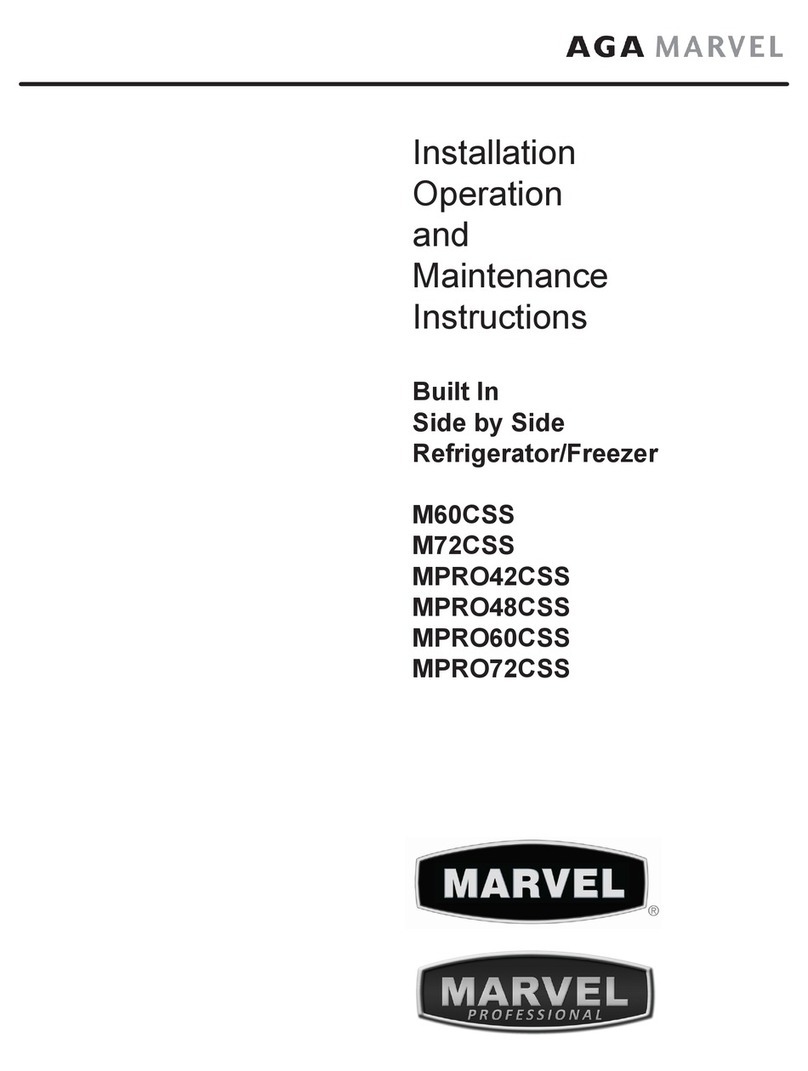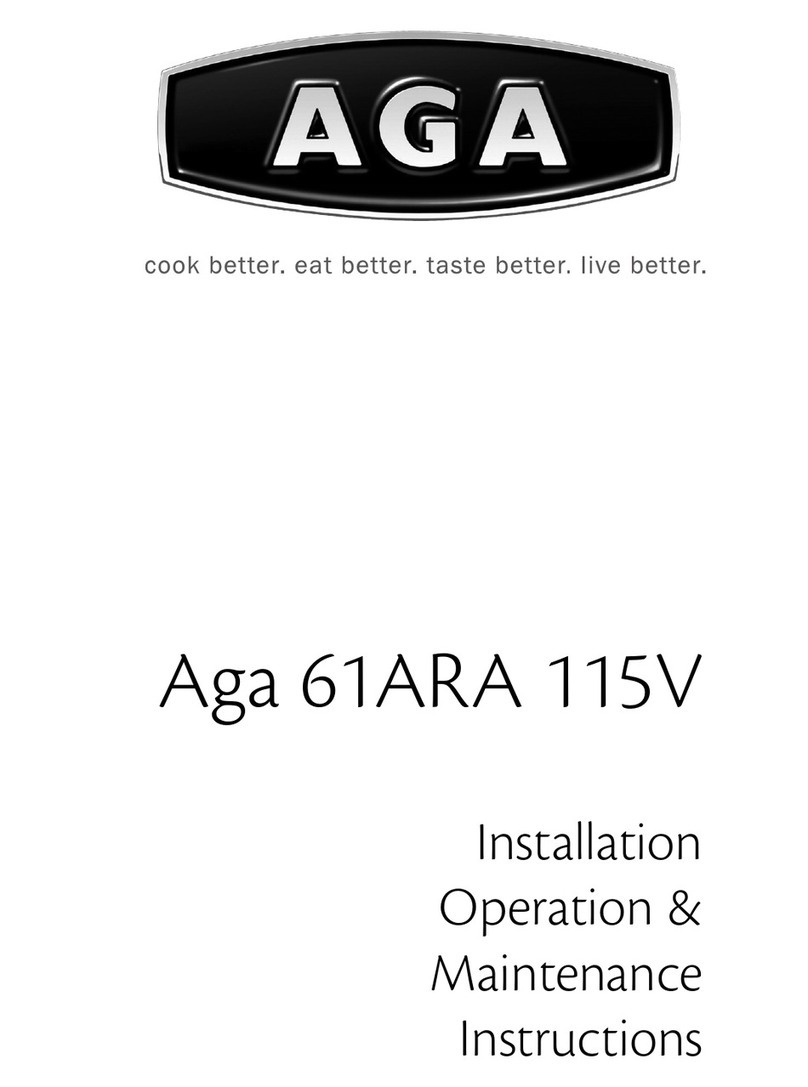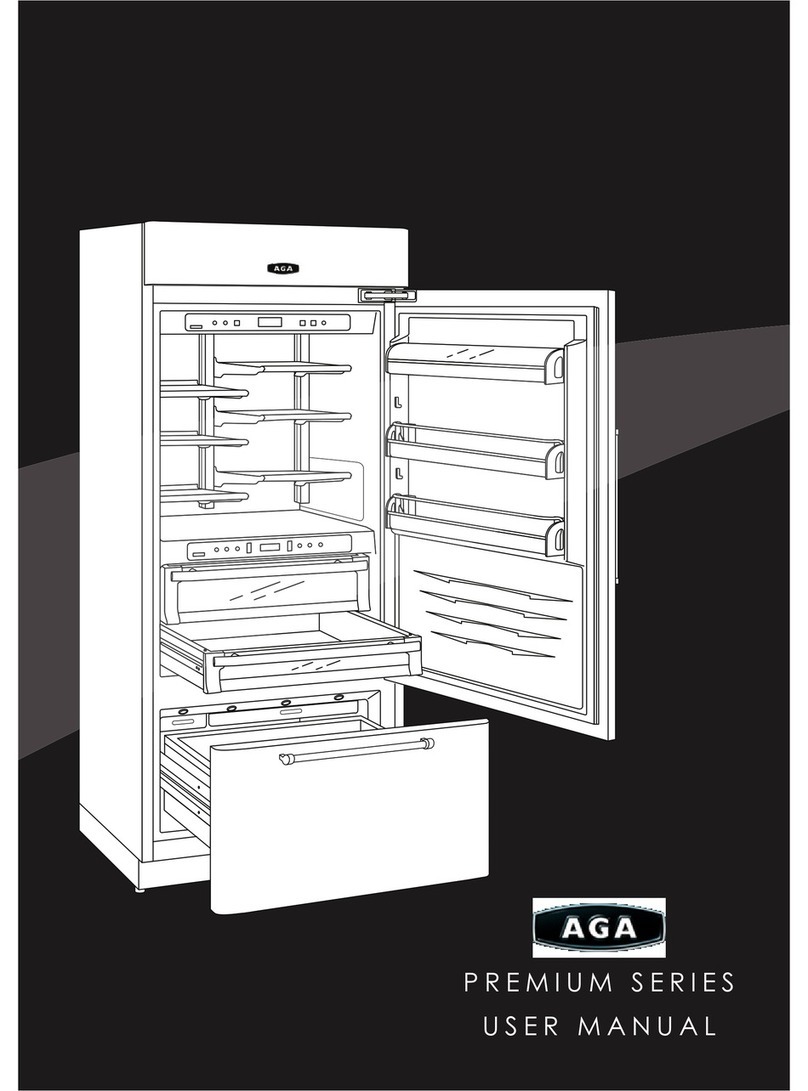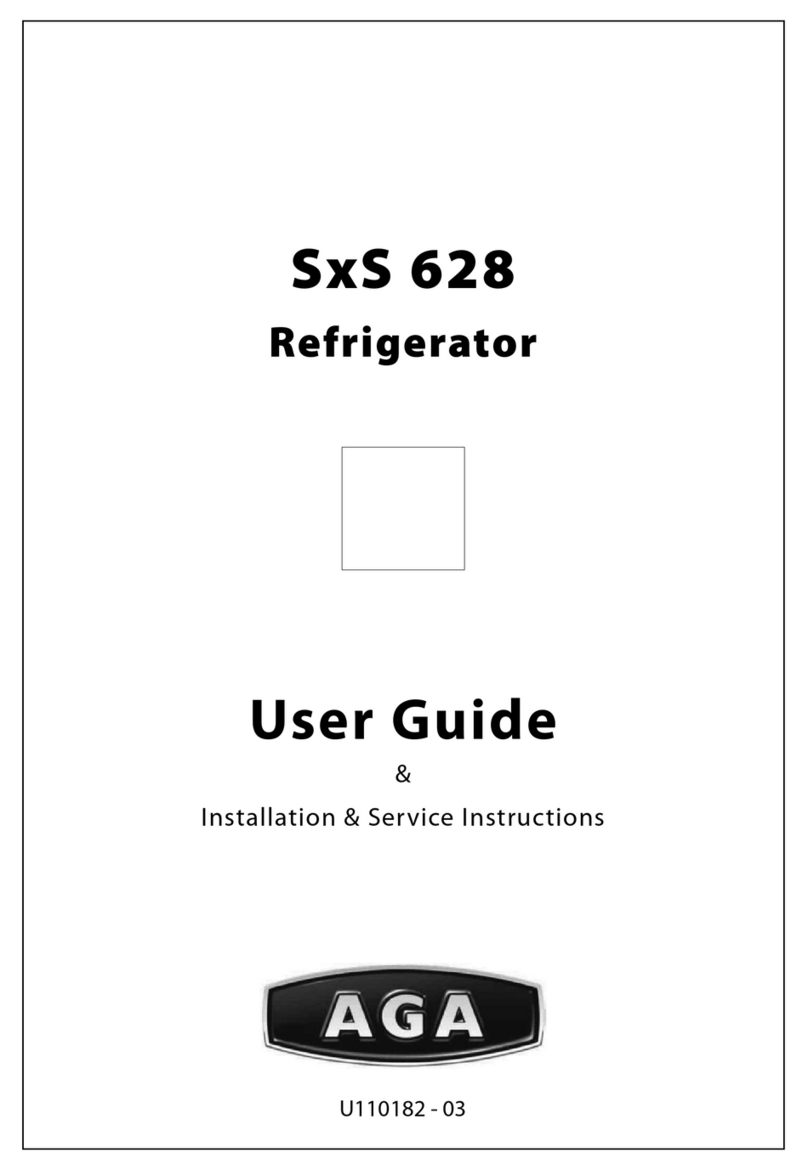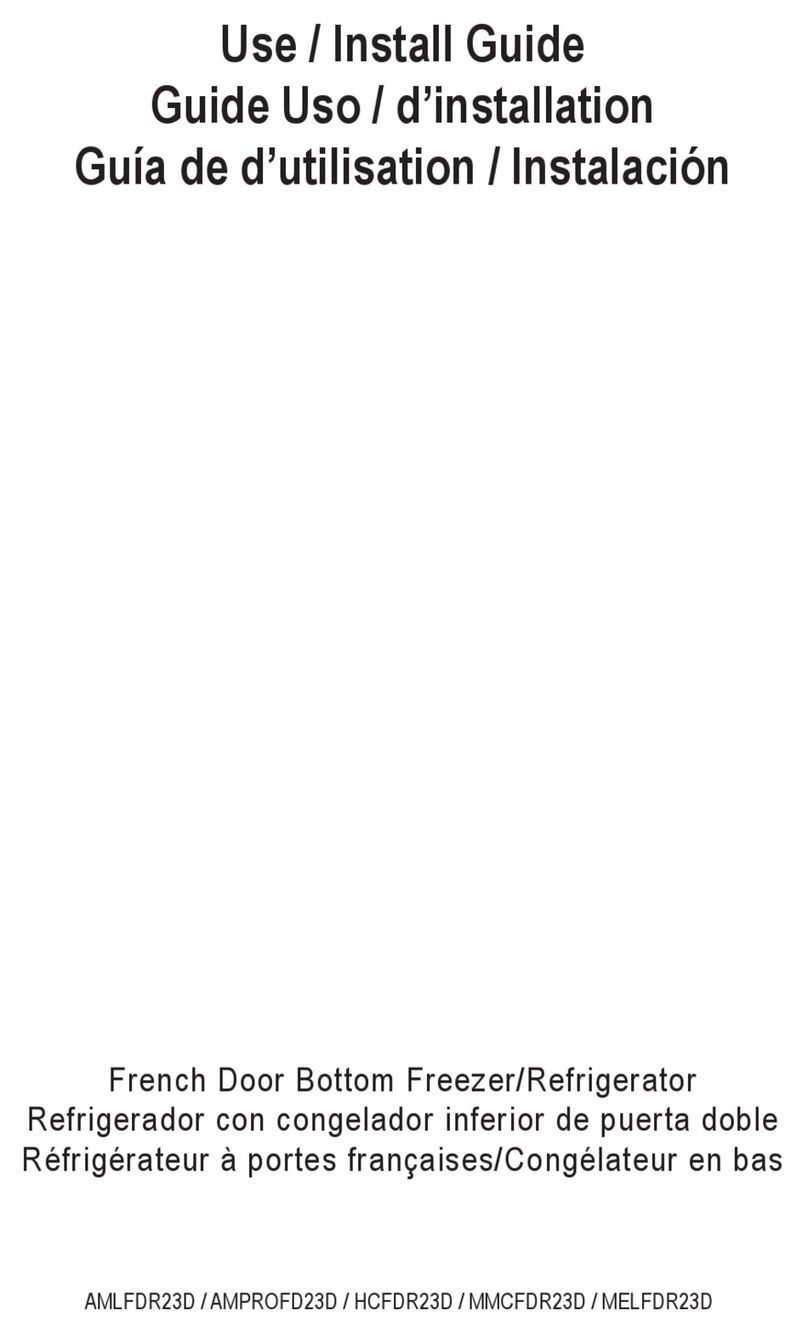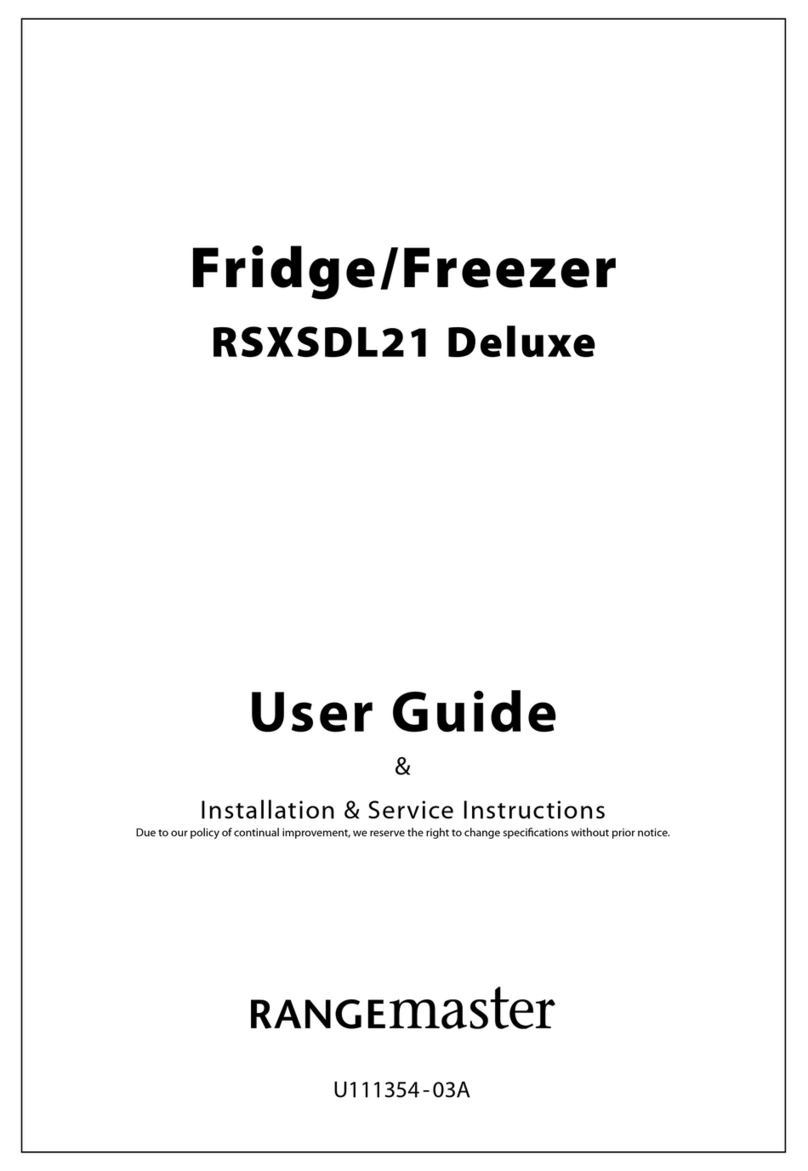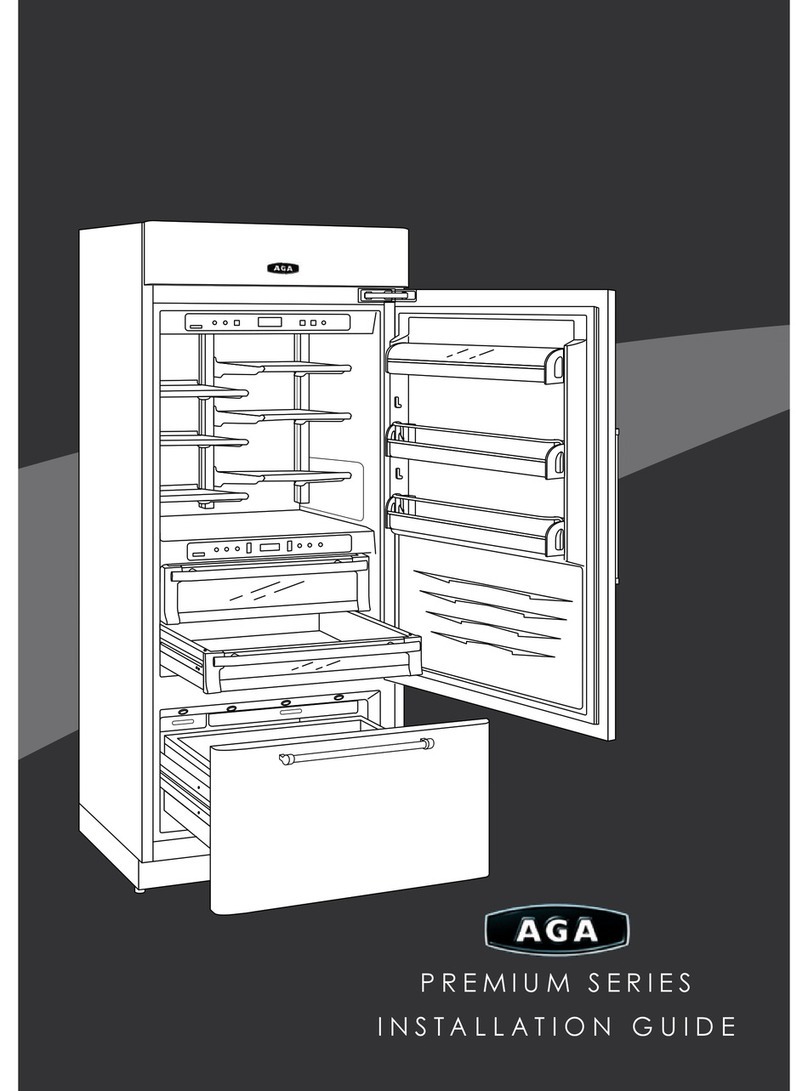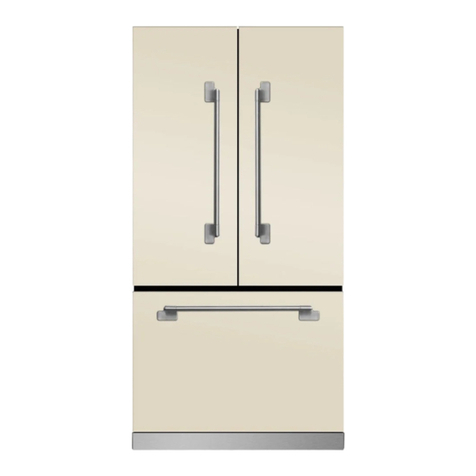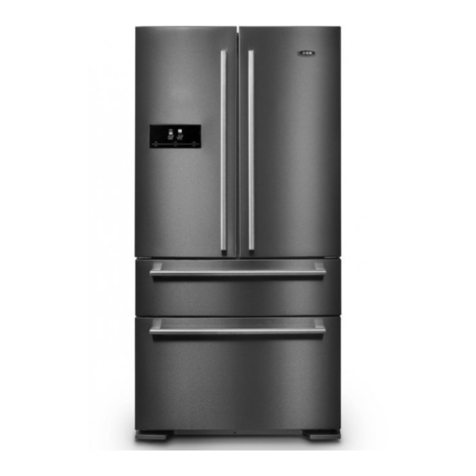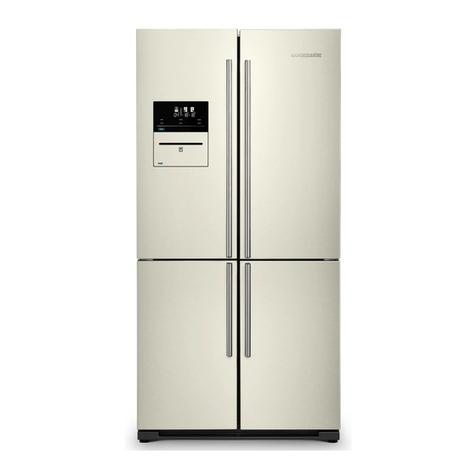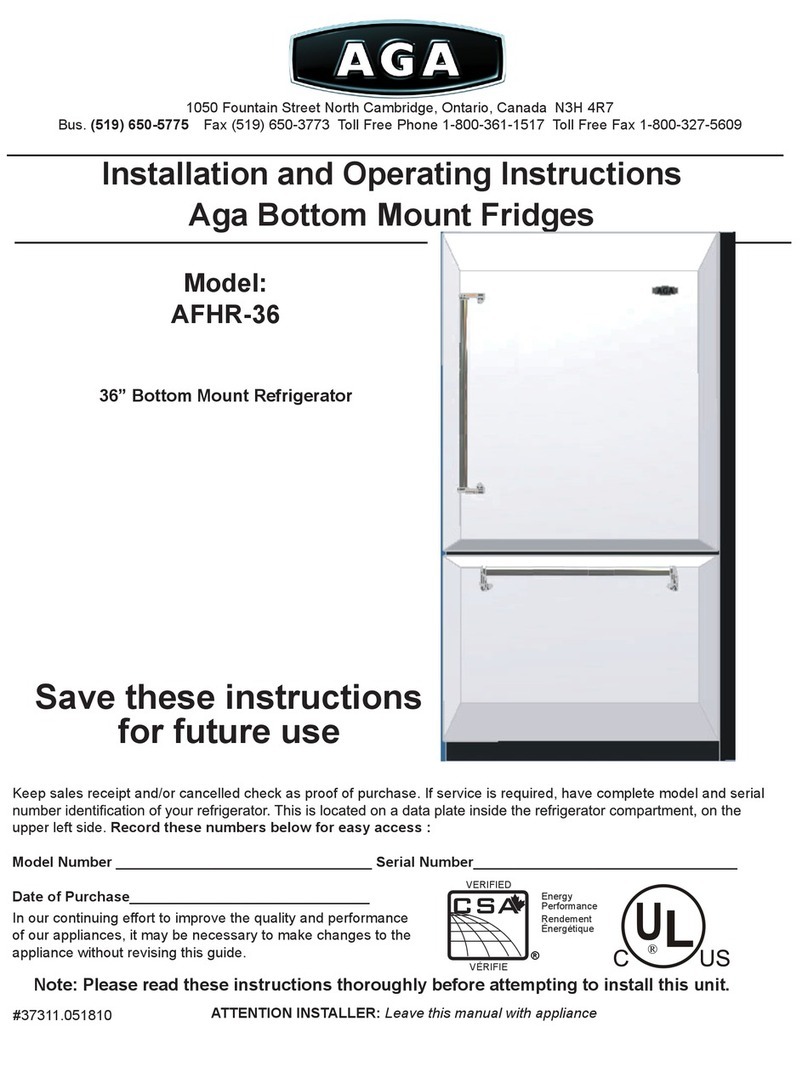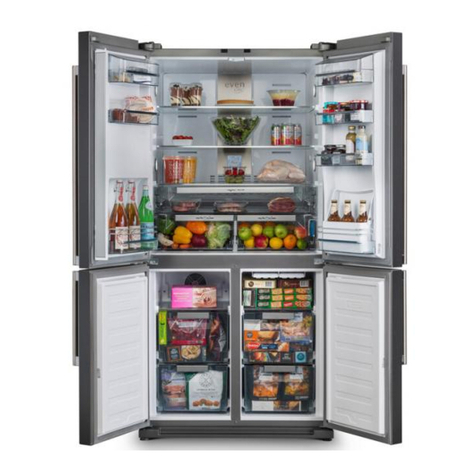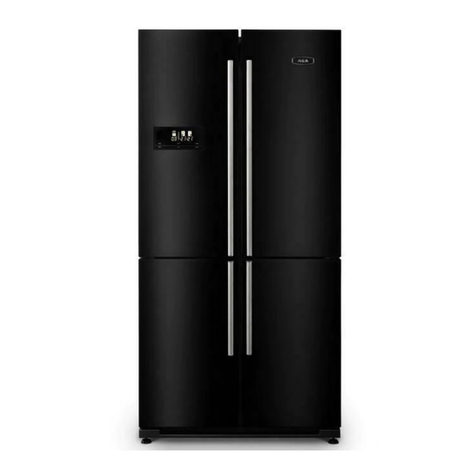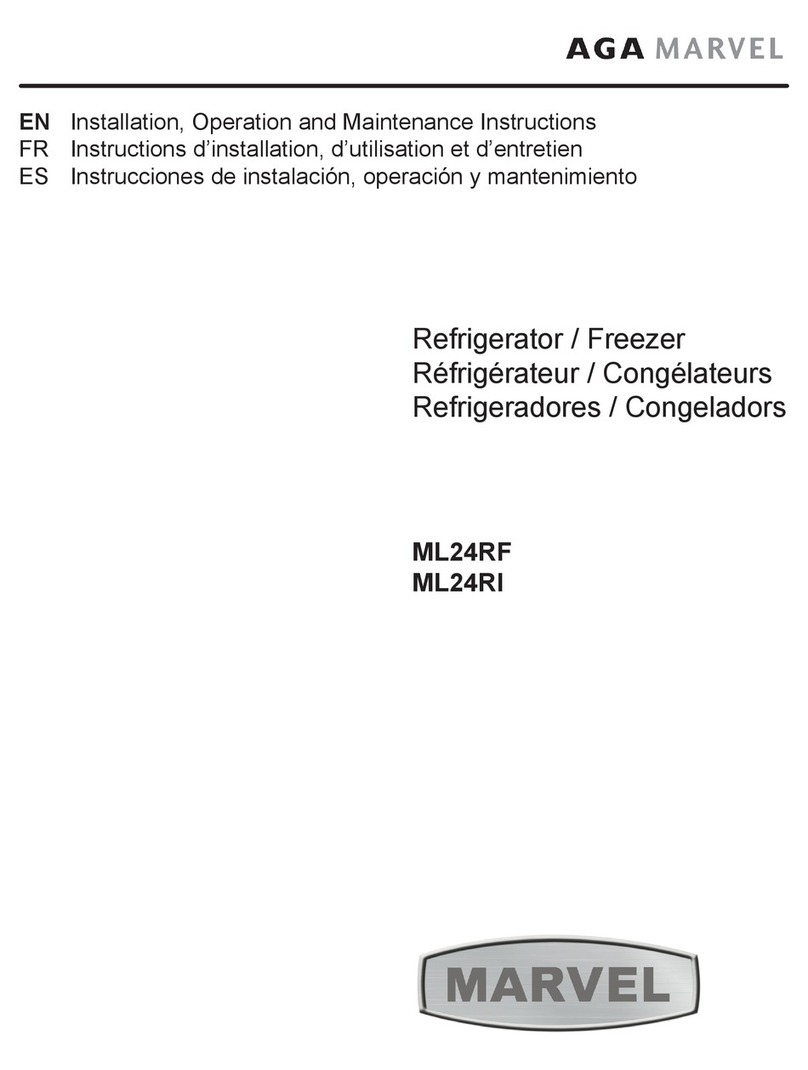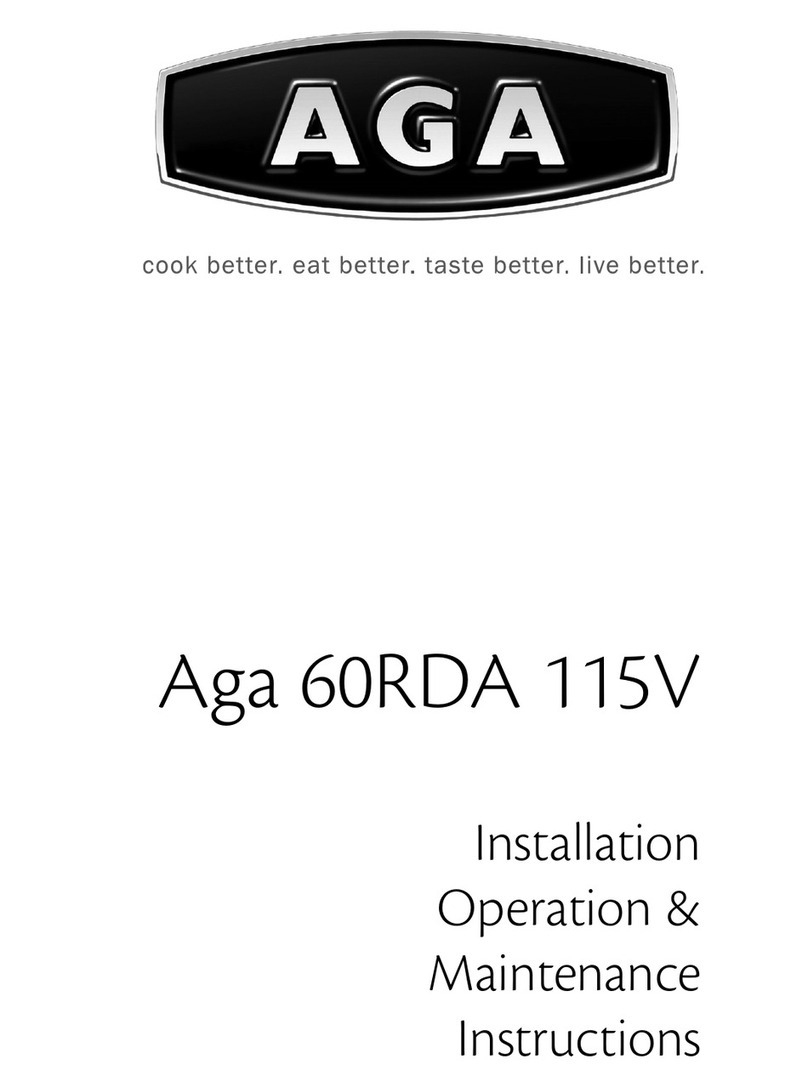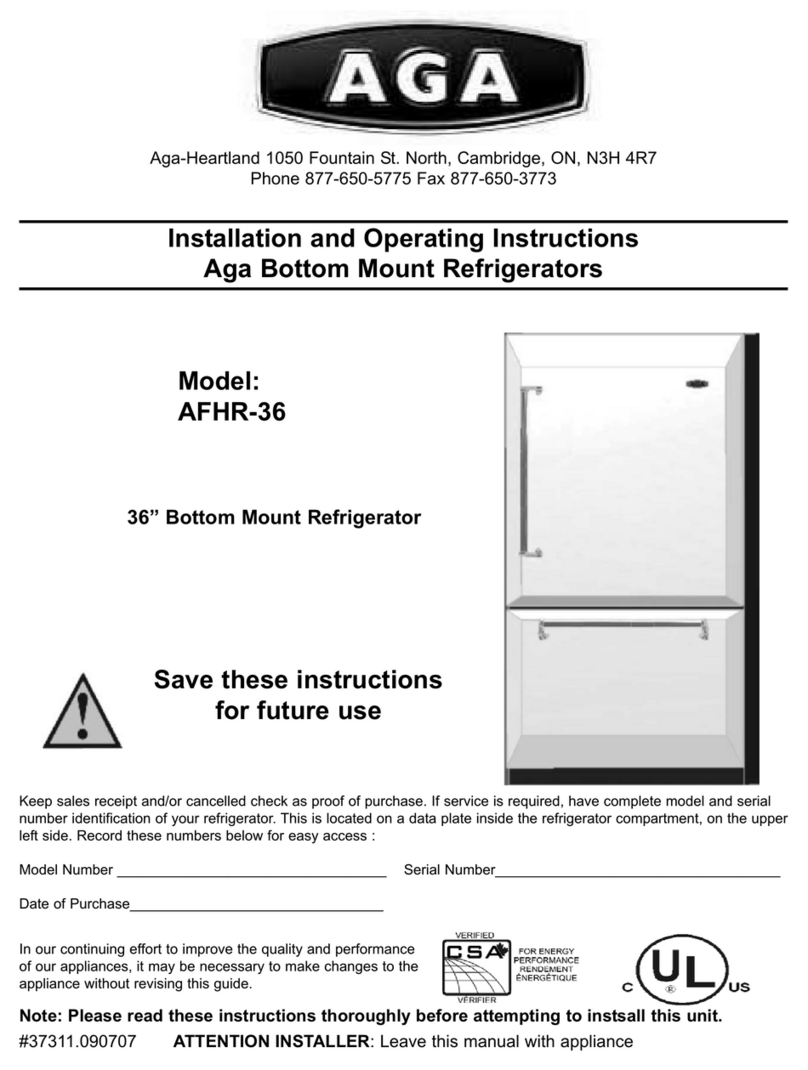
9
NOTE
If the control lock is active (illuminated lock icon)
the control will have to be unlocked before using
the keypad to reset an alarm condition. See page 9
(Control Lock) for instructions for unlocking the control.
Temperature Sensor Error Codes
Sensor Displayed Code Error Description Action to Take
Single Zone
Temperature
Sensor
Failed temperature sensor in the single
zone compartment. Can lead to
unwanted storage temperatures and/or
spoiled perishable goods.
Call service to have the
temperature sensor replaced and
remove all perishable goods from
compartment to prevent spoilage.
Defrost Sensor
Failed defrost temperature sensor.
Causes unit to not defrost properly and
can create large frost build-up. Can lead to
water damage to the unit and
surrounding oor.
Unplug the power cord
immediately and call service to have
the defrost sensor replaced.
The temperature sensors are monitored continuously. Any
OPEN or SHORTED circuit condition will initiate an ER-
ROR CODE as listed below:
Temperature Sensor Error Codes
USING YOUR ELECTRONIC CONTROL
Temperature mode:
The temperature mode is preset from the factory in Fahren-
heit (°F) but you have the option to change it to Centigrade
(°C). To change the mode, press and hold the "-" keypad,
while pressing the "+" keypad, then release the "-" keypad.
The temperature will now be displayed in Centigrade (°C).
Repeat the procedure to change the temperature mode
back to Fahrenheit (°F).
Control lock:
The control panel can be locked to avoid unintentional
changes. To lock the control, press and hold the "Lock" key-
pad until the display reads "Loc" then immediately release
your nger from the keypad. The lock icon will ash 3-times
and then continuously illuminate. When the control panel is
locked, only the Lock keypad, System Status OK indicator
, and the Alarm indicator are active. To un-lock the control
panel, repeat this instruction until the display reads "nLc",
then immediately release your nger from the keypad.
Adjusting the temperature:
To set or check the set-point temperature (with the control
out of sleep mode), press the "-" or "+" keypads. "SET" will
be indicated on the user interface panel and the current
set-point temperature will display and ash. Subsequent
presses of the "-" or "+" keypads will adjust the temperature
colder or warmer respectively. When you have reached
your desired set-point temperature, press the "On/Off" key-
pad to accept, or do nothing and the "Set" mode will time-
out in 10-seconds accepting the displayed temperature as
the new set-point.
The available set-point temperature range for your ap-
pliance is 34°F (1.2°C) to 42°F (5.7°C). If you attempt to
adjust the temperature outside of this range you will receive
an audible notication.
When initially loading your product with warm contents, it
may take up to 48-hours for the storage compartment tem-
perature to stabilize.
When making temperature set-point changes, it may take
up to 24-hours for the stored contents to stabilize at your
new set-point temperature.
Factors that affect the storage compartment stabilized
temperature:
• Changes to temperature setting.
• Room temperature changes.
• Temperature of stored contents.
- Loading warm contents.
- Cold content load will delay the change to a warmer
set-point temperature.
- Warm content load will delay the change to a colder
set-point temperature.
• Usage, (number and duration of the door openings).
• Use of the storage compartment display lighting, (glass
door product only).
• Installation of the appliance in direct sunlight or next to
a heat source.
